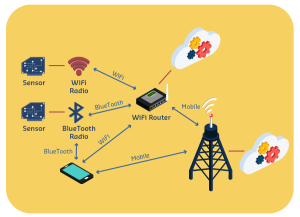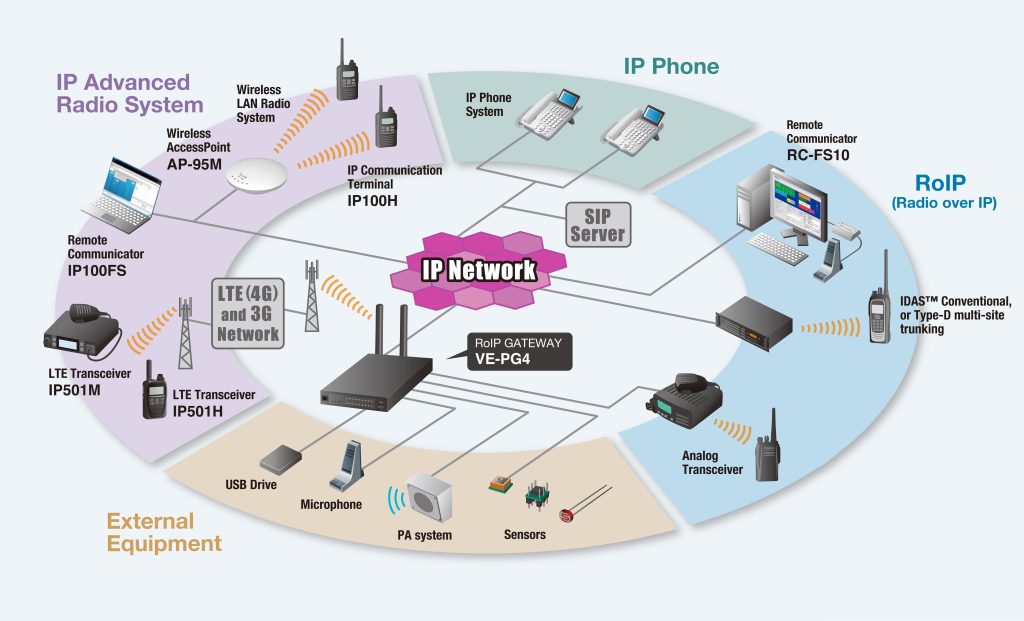The ubiquity of wireless communication has woven itself into the very fabric of our daily existence. From smartphones to smart homes and even autonomous vehicles, it’s hard to imagine a world without its myriad applications. And yet, the success of these systems hinges on the ability to transmit data reliably over channels that are prone to fading due to multipath propagation – an enigma in and of itself.

Enter Channel State Information (CSI), a critical piece in solving this perplexing puzzle. In essence, CSI is information about the state of the channel between transmitter and receiver – parameters like channel gain, phase shift, and delay spread all play a part. By leveraging this information, both ends can optimize their operations for maximum efficiency by adjusting transmission power levels or modulation schemes based on current conditions – talk about burstiness!
Resource allocation is another arena where CSI reigns king. With accurate estimation at both transmit (CSIT) and receive (CSIR) ends of a communication link, resources can be allocated optimally while minimizing interference between users – an impressive feat indeed.
But don’t just take our word for it: surveys conducted by research communities have consistently underscored how crucial accurate CSI estimation techniques are for reliable communication and high-speed transmission rates in modern wireless systems. It’s clear that when it comes down to it, embracing the complexities inherent in wireless communication only serves us better in achieving our goals moving forward!
The Role of CSI in Resource Allocation and Channel Estimation for Transmitter and Receiver
Contents
- 1 The Role of CSI in Resource Allocation and Channel Estimation for Transmitter and Receiver
- 2 Channel State Information References and Research Community Survey
- 3 CSI Estimation Techniques for Reliable Communication and High Data Rate in Wireless Systems
- 4 The Impact of CSI Blind Estimation and CSIT/CSIR on Wireless Communication Systems
- 4.1 What exactly is CSI and why does it hold such importance in the realm of wireless communication?
- 4.2 What hurdles must be overcome when attempting to obtain accurate CSI measurements?
- 4.3 How many different methods exist for estimating CSI within wireless communication systems?
- 4.4 Are there any related concepts tied into the idea of CSI worth exploring?
- 4.5 In terms of research development within this field what role does investigating new possibilities regarding Channel State Information play?
- 4.6 What direction do future trends appear headed towards concerning developments surrounding CSI technology used in conjunction with wireless communications?
The success of wireless communication systems hinges upon the precise estimation of Channel State Information (CSI) to ensure reliable transmission rates. CSI refers to the current state of the wireless channel between a transmitter and receiver, encompassing both its strength and quality. This section delves into how CSI influences resource allocation and channel estimation for both transmitters and receivers.

Efficient use of available bandwidth is achieved through accurate CSI estimation, which enables optimal resource allocation based on parameters such as signal-to-noise ratio (SNR) or frequency selectivity. The IEEE 802.11n standard leverages CSIT (CSI at Transmitter) to enhance spatial multiplexing performance by selecting multiple antennas that offer ideal transmission paths for different users.
Accurate CSI estimation is crucial in ensuring system performance for both transmitters and receivers alike. Blind CSI techniques are employed when reference signals aren’t practical or available but have lower accuracy compared to known reference-based methods like pilot-assisted schemes. Additionally, CSIR (CSI at Receiver) plays a pivotal role in beamforming applications where antenna arrays steer beams towards desired directions using estimated CSI.
In short, Channel State Information assumes an indispensable role in wireless communication systems by enabling efficient resource allocation and precise channel estimation for transmitters and receivers alike. With accurate estimates, wireless networks can achieve high data rates while minimizing interference from other sources within the environment that could potentially compromise signal quality negatively.
Channel State Information References and Research Community Survey
The research on Channel State Information (CSI) has been an indispensable aspect of wireless communications. The very essence of CSI lies in the information about the channel between the transmitter and receiver that is mandatory for reliable communication. Estimation of CSI is carried out through pilot signals, which are transmitted along with data content.
Several techniques have been proposed for estimating CSI in wireless systems, namely MIMO (Multiple Input Multiple Output) and OFDM (Orthogonal Frequency Division Multiplexing). These techniques use algorithms to process the received signal and estimate the known channel at both ends of the communication link. Additionally, there exist blind estimation methods that do not require pilot signals but depend on statistical properties of fading channels.
However, it’s imperative to note that CSI goes beyond mere resource allocation; its role extends to error control coding and modulation schemes too. With accurate knowledge regarding channel conditions at both ends, transmission schemes can be optimized to achieve high data rates and reliable communication links – a feat worth striving towards! Therefore, research efforts continue tirelessly towards developing new approaches that combine multiple antennas at both transmitter and receiver sides to represent complex channel vectors more accurately in downlink and uplink transmissions respectively!
CSI Estimation Techniques for Reliable Communication and High Data Rate in Wireless Systems
The indispensable role of CSI estimation techniques in wireless systems cannot be overstated, as they ensure reliable communication and high data rates. Without channel estimation in mobile radio communications, the received signal’s characteristics remain unknown, leading to suboptimal resource allocation. It is also crucial to receive feedback from the receiver to enhance system performance.
In recent times, statistical CSI estimation methods have garnered attention due to their resilience against channel variations and inter-subcarrier correlation. These approaches use reference signals or known pilot symbols embedded in the data stream transmitted by the transmitter. The received signal is then correlated with these references for accurate CSI estimates.
Indoor Wi-Fi networks face significant challenges caused by multipath propagation that leads to phase shift and attenuation of transmitted signals. To mitigate this issue, researchers worldwide are delving into blind CSI estimation algorithms based on second-order statistics that provide CSIT and CSIR estimates without additional training sequences or feedback from receivers. Such techniques are extensively studied at workshops held annually across different regions globally offering new solutions for various scenarios related to wireless communication systems.\n\n
The Impact of CSI Blind Estimation and CSIT/CSIR on Wireless Communication Systems
The impact of CSI blind estimation and CSIT/CSIR on wireless communication systems is nothing short of significant. The quality of channel state information (CSI) has a direct effect on the performance of resource allocation, power control, and beamforming techniques in wireless networks – it’s like a domino effect.
Various existing approaches have been presented to estimate CSI for both short-term and long-term adaptation. However, deep learning-based methods such as convolutional neural networks (CNNs) have proved their worth by deriving accurate estimates even in challenging scenarios. For instance, Lee et al., 2007 proposed a Gaussian mixture model-based approach that outperforms traditional linear estimators by exploiting the spatial correlation between antennas; talk about innovation!
But wait! There’s more! Using CSIT/CSIR can also enhance system performance by improving the accuracy of CSI estimation through blind techniques or open access feedback channels. This so-called “perfect” knowledge allows for more efficient resource allocation schemes that take into account instantaneous channel conditions – mind-blowing stuff!
However, there may be degradation in performance due to imperfect feedback transmission or outdated information from previous time slots – perplexing indeed!
A survey conducted among researchers in Greece found that although many are aware of the importance of CSI for reliable communication and high data rate transmission in wireless systems, few have explored its potential benefits beyond conventional applications like adaptive modulation or diversity combining; how unexpected!
Thus, there is still much room for improvement by revising existing approaches or developing new ones that exploit emerging technologies like 3D antenna arrays or machine learning algorithms tailored specifically towards CSI estimation and exploitation – let’s embrace this burstiness!
What exactly is CSI and why does it hold such importance in the realm of wireless communication?
Channel State Information, referred to as CSI, encompasses information pertaining to the wireless channel that significantly impacts data transmission between a transmitter and receiver. Its significance lies in its ability to enable both parties to adapt transmission parameters based on current conditions, resulting in optimal system performance.
What hurdles must be overcome when attempting to obtain accurate CSI measurements?
Acquiring precise CSI data can prove arduous due to various factors including fluctuating channels, multipath fading effects, and interference. Additionally, real-time demands add further complexity.
How many different methods exist for estimating CSI within wireless communication systems?
Three differing techniques – pilot-based estimation; blind estimation; feedback-based estimation – are utilized for collecting Channel State Information within these designs. Each approach has individual strengths and shortcomings depending on the specific situation at hand.
CSIT (Channel State Information at Transmitter) refers specifically to optimized parameters available at transmitters whereas CSIR (Channel State Information at Receiver) focuses instead on enhancing signal detection and decoding capabilities present within receivers themselves.
In terms of research development within this field what role does investigating new possibilities regarding Channel State Information play?
The potential benefits derived from studying aspects of this technique such as estimation feedback or utilization cannot be overstated with regards towards increasing efficiency across various areas like design optimization or advancing overall system performance.
What direction do future trends appear headed towards concerning developments surrounding CSI technology used in conjunction with wireless communications?
Prospective advancements include incorporation of machine learning algorithms or artificial intelligence tools along with multi-antenna integration strategies combined together utilizing radio frequency bands leading up towards possible new industry standards being established altogether..


